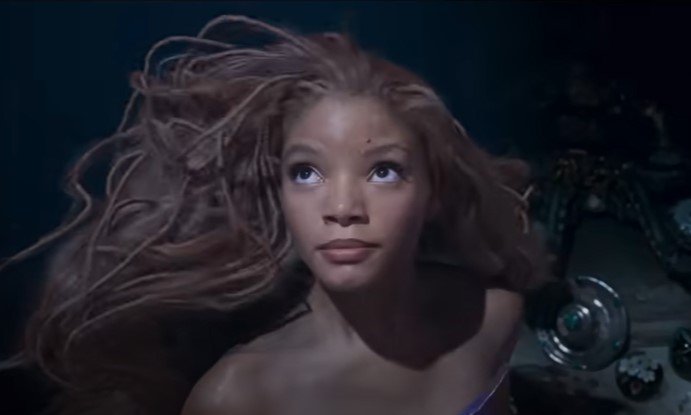The Little Mermaid Review: “The Little Mermaid” presents a unique take on the classic tale, with Halle Bailey as a brown-skinned Ariel, offering a refreshing sight for South Asian audiences. While some may find the film lacklustre compared to recent big-budget Hollywood productions, it holds significance in its representation.
Directed by Rob Marshall, this live-action adaptation follows the original storyline, where Ariel, a teenage mermaid princess, falls in love with a human prince and makes a deal with the sea witch to pursue her romance.
The film’s departure from the original Danish fairy tale by Hans Christian Andersen is notable. In the original story, the mermaid princess sacrifices not just her voice but also endures excruciating pain to win the prince’s love and obtain an eternal soul. However, the new adaptation injects a certain politics into the narrative through Halle’s brown skin, challenging the traditional depiction of the character.
Despite some flaws, the film embraces a woman’s agency and autonomy to a certain extent. Ariel, silenced without her voice, attempts to convince Prince Eric of her identity and love, setting a three-day deadline to achieve “true love’s kiss” or face eternal servitude to the sea witch. The notion of finding true love within a short span and risking self-harm or enslavement is a regressive element that harkens back to the past.
“The Little Mermaid” struggles to align with the changing landscape of women-led stories, considering the remarkable progress made in recent years. The film grapples with these issues through Ariel’s journey but falls short in delivering a truly progressive narrative. It echoes Disney’s tendency to include memorable one-liners while tackling problematic themes.
The Little Mermaid Review: Casting Shines

The outdated ideas persist in the Little Mermaid, particularly in the unsettling notion of Ariel’s young age and her rushed happily-ever-after that culminates in an early marriage. However, the casting shines as a highlight. Halle Bailey’s musical talents and endearing charm bring life to Ariel, and her mixed-race pairing with Jonah Hauer-King offers a rare representation on screen. The film consciously challenges conventional casting practices by featuring a Black Queen Mother and a person of color as Grimsby.
Melissa McCarthy portrays Ursula convincingly, but the character itself raises questions. Over time, Ursula has become an icon for body positivity and rebellion against regressive norms. However, the film fails to embrace this liberated perspective, vilifying the character while portraying Triton, a controlling man, in a more sympathetic light. Disney’s dated portrayal of women seeking power remains offensive and overdue for retirement.
The film’s special effects fall short of creating an enchanting undersea world, especially when compared to the awe-inspiring visuals of “Black Panther: Wakanda Forever’s” Talokan. However, “The Little Mermaid” triumphs in its political undertones of skin color representation, leaving a lasting impact on those who once watched the original animated version.
While acknowledging the film’s positive aspects, it’s clear that “The Little Mermaid” should shed the ideas and social norms that no longer belong on our screens. The hope is for diverse casting choices to be accompanied by new stories that can be told and retold in a more inclusive future.
Catch all the excitement in The Little Mermaid here

